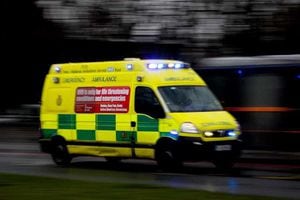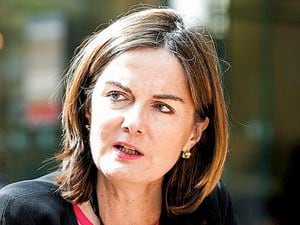Ambulances to be taken to hospitals with shortest waiting time
Ambulances will be taken to hospitals with the shortest waiting times, rather than the nearest geographically in a bid to reduce handover times.

The plans are being drawn up after a senior clinician said patients were being put at risk of “serious harm”.
Mark Docherty, director of corporate and clinical services at West Midlands Ambulance Service, said he had been left worried by patients being left in the back of ambulances for up to two hours at hospitals in the region.
He said leaving frail or vulnerable patients in this way was likely to put them in “significant” risk and said staff were “frustrated” by the situation.
But ambulance service chief executive officer Anthony Marsh, told Mr Docherty £2.3 million plans are about to be launched to tackle the issue – and will see patients transferred to hospitals with the shortest wait rather than the closest geographically.
Shropshire Star comment:
Speaking at a West Midlands Ambulance Service Trust Board meeting in Brierley Hill, Dudley, on Wednesday, Mr Docherty, who is also an executive nurse, said: “Things are not good.
“I believe patients are being put at significant risk of harm.
“The ambulance staff are doing a brilliant job of patient care and we have improved in several areas but it is the hand over at hospitals.”
He said some hospitals in the region, such as Royal Stoke, are coping well, but others, which he did not name, were not doing so well, with waiting times up to and over two hours at extremely busy times.
In these situations, ambulance staff have to wait in the vehicle with the patient until the hospital is ready to receive them.
In November, it was reported that handover rates had risen sharply at Shropshire’s two main hospitals, the Royal Shrewsbury and the Princess Royal, Telford.
West Midlands Ambulance Service (WMAS) said that in 409 cases crews waited longer than an hour to offload patients at Royal Shrewsbury Hospital and Telford’s Princess Royal Hospital during October.
It rose from 216 cases in September and 123 in August.
Mr Docherty added: “Patients can come into harm sat there at -4C waiting in a vehicle, especially the elderly and frail.
“Staff are also getting frustrated, they have been on a blue light call, then are sat outside a hospital. It is frustrating and difficult to explain to them what is happening.
“It is very tense at the moment and we are seeing people get quite frustrated.”
But Mr Marsh said he was developing a plan to help tackle the issue. He said the plan was in early stages but that patients would be taken to the most appropriate emergency department, rather than the most convenient geographically.
“We are going to deploy our assets and see where is best to send patients,” he said.
“Rather than do what we are doing, we will look at what is best. At the moment we are superb at taking calls, deploying the most appropriate teams and treatment, but then we leave it to the crews to decide where to take the patient.
“We need to look now and send them to the most appropriate place, see if there is more we can do to help reduce the pressure.
“It is all about using the most appropriate resources and it is a scheme that will cost us £2.3 million.”
Story by Local Democracy Reporter Andrew Morris





